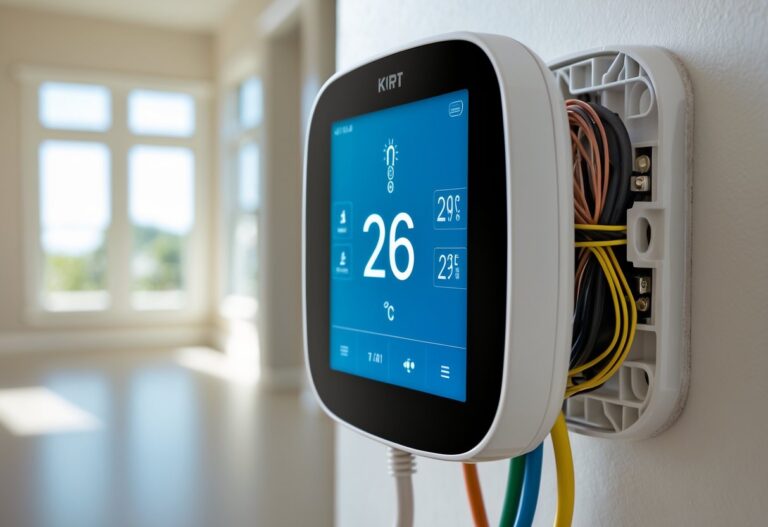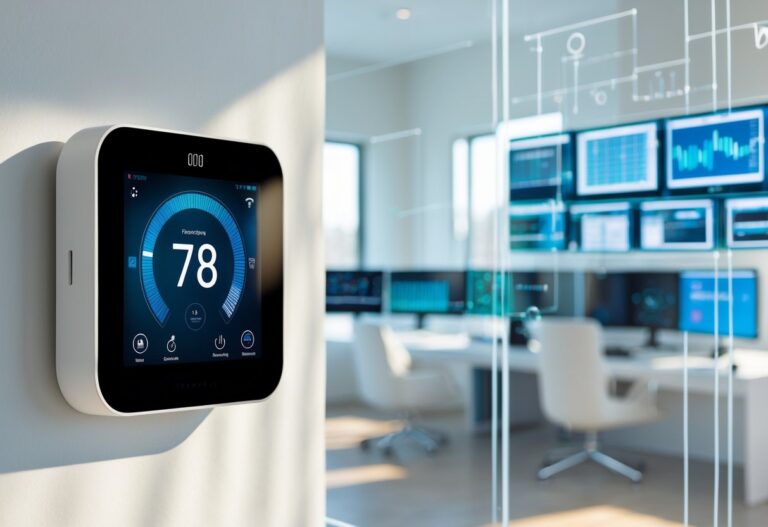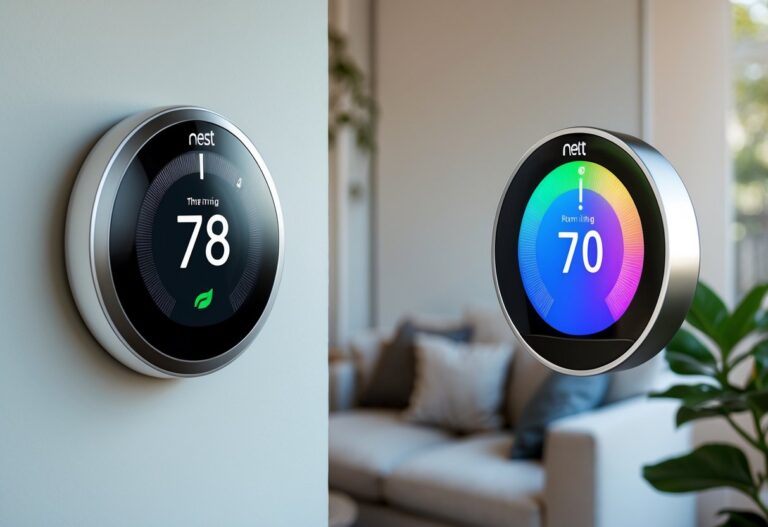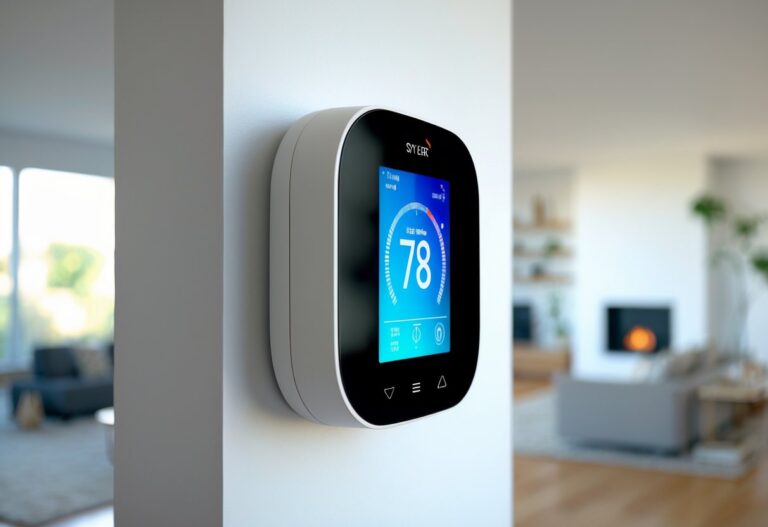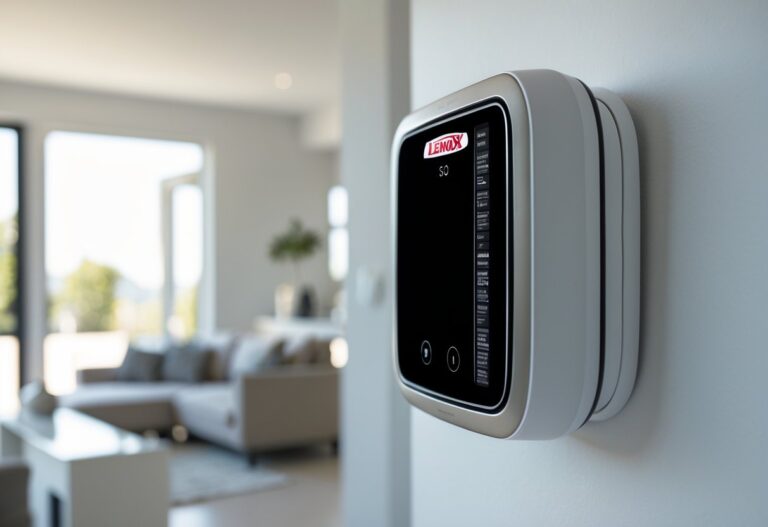Smart thermostats are popular because they promise lower energy bills and more comfort in your home. But you might be wondering if these high-tech devices could hurt your furnace instead of helping it. A smart thermostat will not ruin your furnace if it is installed and set up correctly, but problems can happen if it isn’t compatible or is wired the wrong way.
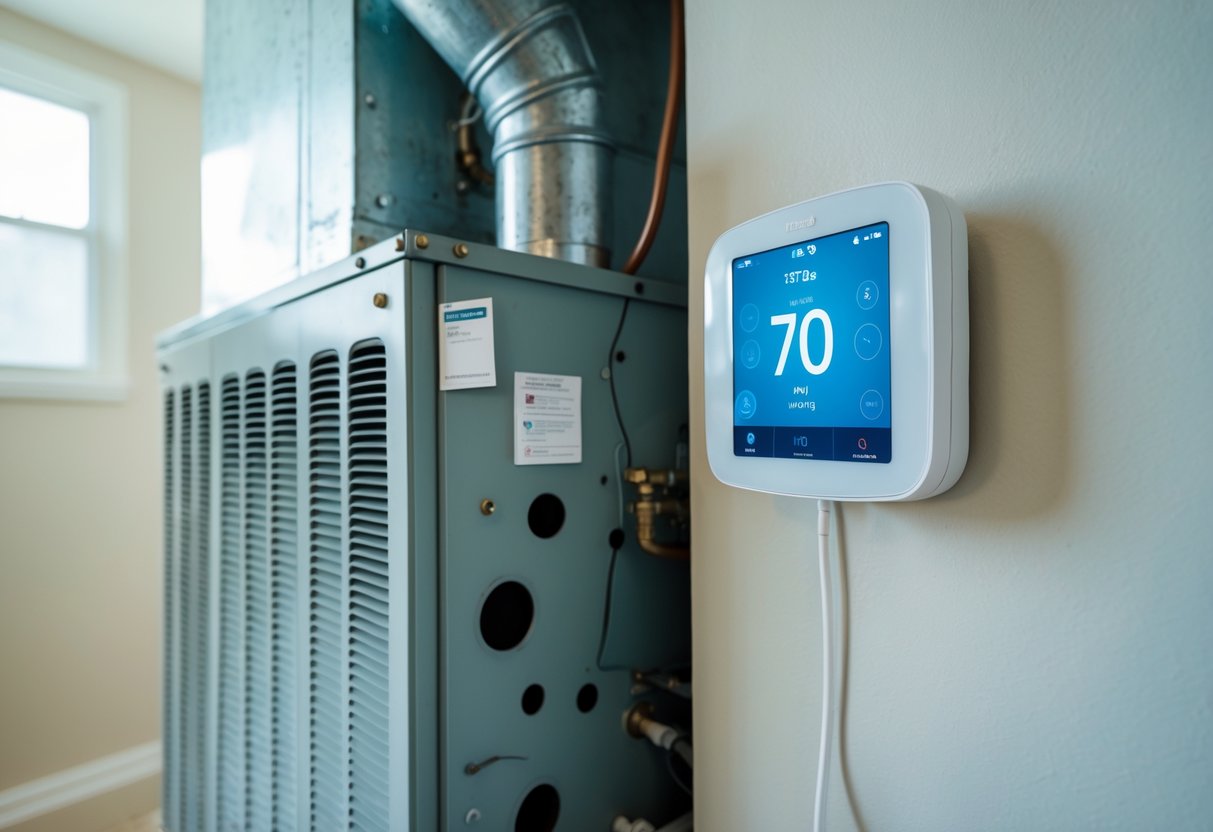
With the right care, a smart thermostat can make your home more efficient and even help your furnace last longer. There are a few things to watch out for before you install one or make changes to your heating system. Simple steps can help protect your furnace and keep your home running smoothly.
Key Takeaways
- Smart thermostats need to be compatible and properly installed.
- Incorrect wiring or settings might strain your furnace.
- Following best practices reduces risks and boosts efficiency.
How Smart Thermostats Interact With Your Furnace
Smart thermostats use advanced sensors and software to manage your home’s temperature. They connect to your furnace and HVAC system to control heating, which helps improve energy use and comfort.
How Smart Thermostats Control Heating Systems
Smart thermostats communicate with your furnace using low-voltage wiring already connected to most home HVAC systems. The most common method is a wired connection that allows the thermostat to signal when to turn the furnace on or off.
Many models support popular heating systems, such as gas, electric, or forced air furnaces. They detect the temperature through built-in sensors or remote sensors you can place in different rooms for better control.
Some smart thermostats need a “C wire” to receive constant power. If your system doesn’t have one, you may need an adapter kit. Compatibility between your thermostat and HVAC system is important to avoid connection problems or damage.
Smart thermostats use Wi-Fi or other protocols, such as Zigbee or Z-Wave, to let you control and monitor the heating system remotely. You can change the temperature or set schedules using a smartphone app.
Energy Efficiency Features And Benefits
With smart thermostats, you can take advantage of energy-saving features that help lower utility bills. They can learn your habits and schedule, adjusting the heat when you are home or away.
Features like geofencing use your phone’s location to turn the heating system off when you leave and back on before you return. Others include adaptive recovery, which heats your home just in time for when you need it.
Many models provide you with usage reports and tips. These insights let you track patterns and see where you can save energy.
Some smart thermostats also offer integration with other smart home devices, allowing better control of your whole HVAC system. You can even get alerts for problems, such as if your furnace is not working properly or needs maintenance.
Ways Smart Thermostats Could Potentially Harm Your Furnace
Smart thermostats can save energy and improve comfort. However, they may introduce problems if not installed or used carefully. Wiring issues, compatibility mismatches, excessive cycling, or poor sensor placement can create risks for your furnace and HVAC system.
Incorrect Installation And Wiring Problems
Improper installation is a main source of furnace issues when using smart thermostats. Incorrect wiring can prevent the thermostat from communicating with the furnace, leading to frequent system errors or the furnace not turning on at all.
Smart thermostats often need a C-wire (common wire) for continuous power. If your system does not have a C-wire and the thermostat draws power from other wires, this can cause “power stealing.” This may result in short cycling, where the furnace turns on and off too often. Frequent cycling wears down components like the igniter or blower motor.
Using the wrong wire connections can also prevent the thermostat from accurately reading or controlling the furnace’s temperature settings. Always follow the manufacturer’s wiring guide, or get a professional to install your smart thermostat to avoid these problems.
Compatibility Issues With Existing HVAC Systems
Many smart thermostats are designed for modern HVAC systems, but some older furnaces may not work well with them. Compatibility issues can cause the thermostat to misread temperature settings or fail to control the home heating system properly.
For instance, certain furnaces have unique power requirements or use non-standard wiring. If your smart thermostat isn’t built to handle these differences, it may not be able to communicate with or control the furnace at all. This might make it impossible for you to use advanced features or could even prevent the furnace from running.
In some cases, incompatible thermostats may cause error codes, lead to frequent system resets, or force your furnace into backup modes that are less efficient. Always check if your smart thermostat is compatible with your specific furnace model to avoid these problems.
Frequent Temperature Adjustments And System Cycling
One risk of using a smart thermostat is frequent temperature changes or manual overrides through your phone or home assistant. Constant adjustments may cause the furnace and blower to cycle on and off far more than necessary.
This is called short cycling. Too much cycling increases wear and tear on furnace parts, especially on older homes’ HVAC systems. You may notice higher repair bills and decreased furnace life.
Smart thermostats may also use adaptive schedules that make frequent changes as they “learn” your routine. If not properly configured, these features can result in more cycling than your system can handle safely. Try to set gradual changes in your temperature schedule and avoid rapid or major swings.
Sensor Placement And Calibration Concerns
Smart thermostats use sensors to detect temperature and control the home heating system. Poor sensor placement can lead to incorrect temperature readings, which in turn affect furnace operation.
If a sensor is placed near a draft, heat source, or in direct sunlight, it may detect temperatures that do not match the rest of your home. This can make the furnace run too often or not enough, hurting both comfort and efficiency.
Calibration problems can cause the thermostat to misinterpret your desired settings, calling for heat when not needed, or failing to heat your home when it’s cold. Regularly check sensor placement and recalibrate your thermostat if you notice unusual furnace behavior.
Clear sensor data and careful configuration help ensure your furnace works as intended with your smart thermostat.
Best Practices To Safeguard Your Furnace With Smart Thermostats
Installing a smart thermostat can help your home heating system save energy and run more efficiently. To protect your furnace and HVAC system, focus on correct setup, thermostat compatibility, and regular maintenance.
Ensuring Proper Installation And Setup
Proper installation is key to keeping your furnace and HVAC system running smoothly. Always follow the manufacturer’s instructions for wiring and configuration. If you are unsure about the process or your home’s wiring, contact a licensed HVAC technician to handle the job.
Incorrect installation can lead to problems like short cycling, which stresses your furnace and may reduce its lifespan. Make sure your smart thermostat gets power from a C wire or power adapter to prevent system malfunctions.
Check that all sensors are installed in correct locations, away from sources of heat, drafts, or direct sunlight. Accurate sensor placement allows your thermostat to read indoor temperatures reliably and adjust your furnace only when needed.
Selecting Compatible Thermostats
Not all smart thermostats work with every type of furnace or HVAC system. Before purchasing, review your furnace’s model and make sure the thermostat is compatible with its control system. Most brands provide compatibility checkers on their websites to help you confirm this.
Using an incompatible thermostat can cause your furnace to operate incorrectly, which could lead to wasted energy, unnecessary repairs, or damage. If you have a high-efficiency furnace, two-stage system, or older unit, double-check compatibility details.
When in doubt, consult an HVAC technician. Professional advice ensures you pick a device that fits your current system and avoids future issues.
Routine Maintenance And Air Filter Checks
Regular maintenance is critical even when you have the latest technology. Replace air filters every 1-3 months, or as directed by the furnace or filter manufacturer, to allow proper airflow and prevent your system from overworking.
Keep the area around your furnace clean and free of dust or clutter. Schedule annual check-ups with an HVAC technician to look for problems caused by either the furnace or smart thermostat controls.
Some smart thermostats alert you when it’s time for filter changes or maintenance. Use these reminders to help maintain peak performance and reduce wear on your home heating system.

